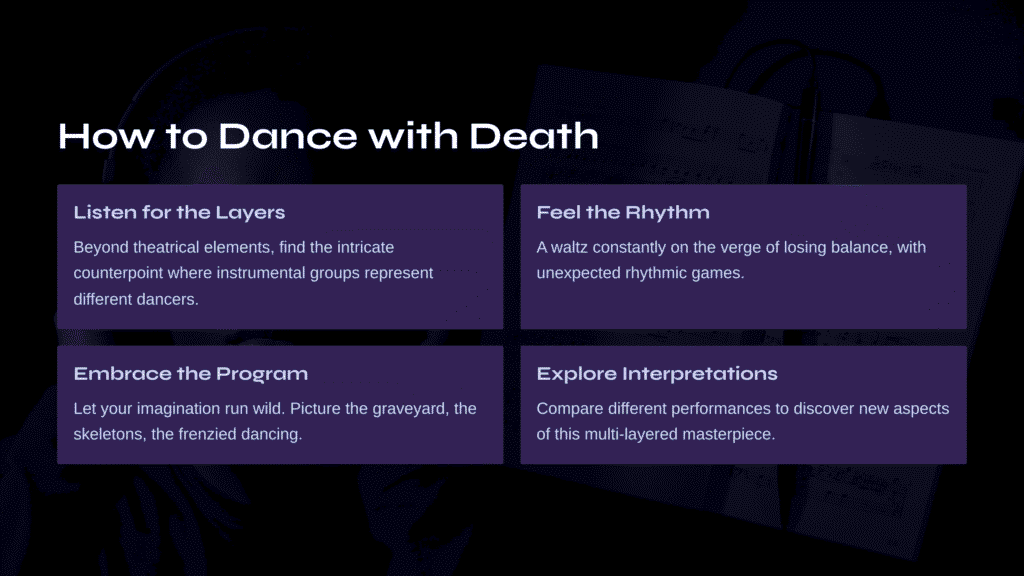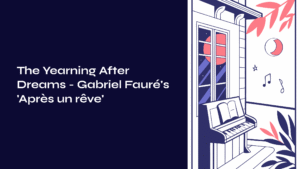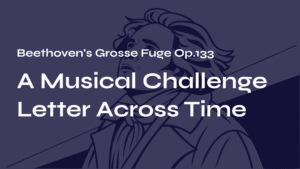Table of Contents

The Haunting Call of Halloween’s Most Famous Waltz
There’s something about the stroke of midnight that makes us pause, isn’t there? That moment when the familiar world seems to hold its breath, and we sense something otherworldly stirring just beyond our perception. It’s in these liminal moments that we might find ourselves most receptive to the supernatural—and to the extraordinary music that captures such experiences.
Camille Saint-Saëns understood this feeling perfectly when he composed his Danse Macabre in 1874. This isn’t just another orchestral showpiece; it’s a musical gateway into the realm where death itself becomes the conductor of an otherworldly ballet. The piece draws us into a midnight scene where skeletons emerge from their graves to dance until dawn, transforming our fear of mortality into something strangely beautiful and even liberating.

A Composer Wrestling with Life and Death
Saint-Saëns was no stranger to loss and darkness when he penned this masterpiece. By 1874, the French composer had already witnessed the upheavals of his era—the Franco-Prussian War, the Paris Commune, and personal tragedies that would shadow his entire life. Perhaps it was this intimate acquaintance with mortality that made him the perfect translator of medieval death allegories into modern musical language.
The Danse Macabre tradition itself stretches back to 13th-century Europe, born from humanity’s need to confront mortality during times of plague and social chaos. Medieval artists depicted Death as the great equalizer, summoning popes and peasants alike to join his universal dance. What Saint-Saëns brilliantly achieved was translating this ancient wisdom into the musical vocabulary of Romantic-era France, creating something that felt both timeless and urgently contemporary.
The composer found his immediate inspiration in Henri Cazalis’ 1872 poem of the same name, which reimagined these medieval themes with vivid, almost cinematic detail. Cazalis painted a scene of Death tuning his violin at the stroke of midnight, the skeletons responding to his call with a frenzied dance that continues until the first cockcrow sends them scurrying back to their graves.

A Musical Architecture of the Supernatural
The Midnight Invitation
The piece opens with one of classical music’s most atmospheric beginnings. Twelve deliberate harp strikes mark the witching hour, each note hanging in the air like a bell tolling in an empty cathedral. Muted strings create an ethereal backdrop, and you can almost feel the mist rising from ancient graveyards.
Then comes the moment that never fails to send chills down listeners’ spines: Death’s violin enters with a tritone—that interval once called diabolus in musica, the devil in music. Saint-Saëns achieved this eerie effect by having the soloist tune their top string down from E to E-flat, creating a sound that seems to come from another realm entirely.
The Dance Begins
What follows is a waltz unlike any other. The skeletal dancers emerge with a theme that’s both elegant and grotesque, played first by the flute in a chromatic descent that mirrors the poem’s “descending scale.” It’s a melody that seems to stumble and catch itself, like bones learning to dance again after centuries of stillness.
Saint-Saëns was revolutionary in his orchestration choices. He introduced the xylophone to symphonic music—not as a novelty, but as the perfect instrument to evoke the rattling of bones. The wooden percussion creates an almost tactile sensation, as if we can feel the skeletons’ movements rather than just hear them.
The Sacred and Profane Collide
Perhaps the most audacious moment comes when Saint-Saëns quotes the Dies Irae—the ancient chant of the Day of Judgment—but presents it in a bright major key rather than its traditional minor. It’s as if Death is mocking the very concept of final judgment, suggesting that the afterlife might be more about celebration than condemnation.
The solo violin weaves through it all, sometimes leading the macabre orchestra, sometimes commenting like a supernatural narrator. The scordatura tuning required—lowering that E string to E-flat—forces the performer to reimagine their relationship with their instrument, much as the piece forces us to reimagine our relationship with mortality.

A Personal Encounter with the Infinite
Listening to Danse Macabre is like being invited to witness something we shouldn’t see. There’s an undeniable thrill in the music’s embrace of the forbidden and the feared. Yet what strikes me most deeply is how Saint-Saëns transforms terror into something approaching joy. These aren’t zombies stumbling through a horror movie; they’re souls freed from the constraints of earthly existence, celebrating their liberation with uninhibited movement.
The piece captures something profound about the human condition—our simultaneous fear of and fascination with death. In the skeletons’ wild dance, we might recognize our own desire to break free from social conventions, to express ourselves without restraint or judgment. There’s something almost enviable about their midnight revelry.
When the oboe finally sounds the cockcrow that sends the dancers back to their graves, there’s genuine melancholy in the music. It’s as if we’re being pulled back from a world where we were, for a brief moment, free from all the weight of living.

How to Dance with Death
Listen for the Layers
Danse Macabre rewards careful listening. On first hearing, you might focus on the obvious theatrical elements—the midnight chimes, the devil’s tritone, the bone-rattling xylophone. But return to the piece and listen for the intricate counterpoint that emerges during the development section, where different instrumental groups seem to represent different groups of dancers, each with their own movements and personalities.
Feel the Rhythm
This is a waltz, but one that’s constantly on the verge of losing its balance. Saint-Saëns plays with our expectations of the three-beat pattern, creating moments where the music seems to stumble, recover, and spin off in unexpected directions. It’s worth following these rhythmic games—they’re part of what makes the piece feel so alive and unpredictable.
Embrace the Program
Unlike abstract symphonic music, Danse Macabre tells a specific story. Don’t be afraid to let your imagination run wild as you listen. Picture the graveyard, the emerging skeletons, the frenzied dancing. Saint-Saëns wrote this music to paint pictures in sound, and the more vividly you can imagine the scene, the more the music will reward you.
Explore Different Interpretations
The piece has been recorded countless times, and each conductor brings their own vision to the macabre dance. Some emphasize the horror elements, others the humor, still others the underlying melancholy. Comparing different performances can reveal new aspects of Saint-Saëns’ multi-layered masterpiece.

The Eternal Dance Continues
More than 150 years after its composition, Danse Macabre continues to cast its spell over listeners. It has inspired ballets, appeared in films, been arranged for jazz ensembles, and influenced countless composers. Its tritone has become a musical shorthand for the supernatural, appearing in everything from horror movie soundtracks to Halloween party playlists.
But the piece’s true power lies not in its surface effects—the spooky sounds and theatrical gestures—but in its deeper message about the nature of existence. In Saint-Saëns’ vision, death is not the end but a transformation, not a defeat but a liberation. The skeletons dance not in despair but in celebration, and their midnight revelry reminds us that there’s beauty to be found even in life’s darkest themes.
As the music fades and the dancers return to their eternal rest, we’re left with questions that have no easy answers. What does it mean to be alive? What awaits us beyond this existence? And perhaps most importantly, are we making the most of our brief time in the dance of life?
Danse Macabre doesn’t provide definitive answers, but it offers something perhaps more valuable: the reminder that even in the face of mortality, there’s room for beauty, humor, and transcendence. In Saint-Saëns’ supernatural waltz, death becomes not an ending but another kind of beginning—a midnight invitation to dance with the infinite.

If You Loved This, Listen to This Next
If you were captivated by Saint-Saëns’ ability to transform dark themes into transcendent musical poetry and his masterful orchestral storytelling in Danse Macabre, you might find yourself equally moved by When Music Becomes Poetry: The Swan Lake Moderato That Touches Every Soul – where Tchaikovsky’s delicate orchestration and profound emotional depth create an intimate musical experience that speaks to the soul’s deepest longings.
Both works reveal how great composers can take universal human experiences – whether confronting mortality or yearning for beauty – and transform them into music that continues to touch hearts across generations.



